Andromeda Galaxy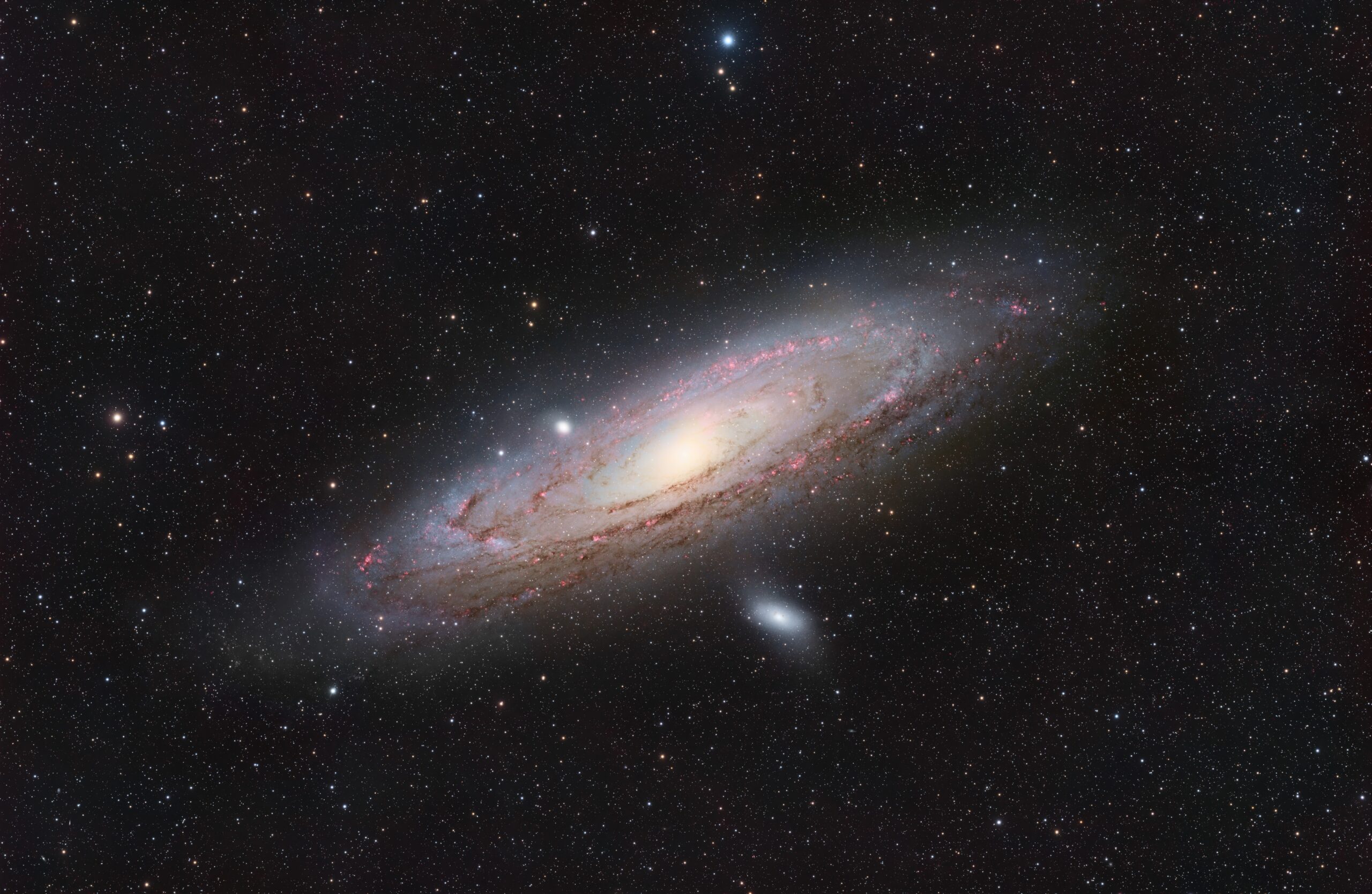
Click image for full size version
September 6, 2025
This image shows the iconic Andromeda galaxy. Most people are familiar with it – Apple even has a desktop background that features it. It’s visible to the naked eye from my house at this time of year, and is a delight in binoculars, small and large telescopes and in images. I first imaged Andromeda in 2009 during the Huronia Star Party, and again in 2014, 2016, and 2023, but this new shot shows better depth, detail and colour than any prior attempt.
The Andromeda Galaxy is thought to be quite similar to our own Milky Way galaxy. The two are the largest galaxies of the cluster we are in, known as The Local Group. It lies about 2.5 million light years from us — pretty close. In fact, Andromeda and the Milky Way will eventually merge. This shot shows star clusters, nebula and dust lanes in the Andromeda galaxy. The galaxy’s tips extend almost right into the corners of this image. The galaxy to the lower right of M31 is M110. This shot shows some dark features in M110. The galaxy on the upper edge of Andromeda is M32, another satellite galaxy. Andromeda is thought to contain about a trillion stars. Wow.
Whenever I look at this galaxy — which is often with my naked eye — I think of the light reaching my eye having begun its journey before humans evolved on earth. Pretty cool.
Tekkies:
Acquisition, focusing, and control of Paramount MX mount and other equipment with N.I.N.A. and TheSkyX. Unguided, Focus with Primalucelab Sesto Senso 2. Equipment control with Primalucelab Eagle 4 Pro computer. All pre-processing and processing in PixInsight. Acquired from my SkyShed in Guelph. Acquired under average transparency and seeing and little moonlight from August 17 – September 2, 2025.
Sky-Watcher Esprit 70 EDX refractor, QHY367C Pro camera.
L-Quad Enhance Filter: 325 x 5m = 27hr 05m
L-eXtreme Filter: 138 x 5m = 11hr 30m
Total: 38hr 35m
Preprocessing: The WeightedBatchPreProcessing script was used to perform calibration, cosmetic correction, weighting, registration, integration and Drizzle integration of all frames (2x drizzle, 0.9 Drop Shrink).
RGB and NB masters: The L-Quad Enhance Filter master was renamed ‘RGB’ and used as the broadband base image. The red channel was extracted from the L-eXtreme Filter master and renamed ‘Ha.’
Gradient Removal: DynamicBackgroundExtraction was applied to the RGB and Ha masters.
Colour Calibration: BlurXterminator was applied to the RGB master with Correct Only selected, followed by ColorCalibration.
Deconvolution: BlurXterminator was applied to the RGB and Ha masters with Automatic psf , star sharpening set to 0.35, and non-stellar set to 0.9.
Linear Noise Reduction: NoiseXterminator was applied to the RGB and Ha masters with settings Amount=0.9 and Interations=4.
Ha Continuum Subtraction: The SpectrophotometricContinuumSubtraction script by Charles Hagan was used to remove continuum emissions and stars from the Ha master using the red channel of the RGB master as the continuum reference image.
Stretching: HistogramTransformation was applied to make a pleasing image from the RGB and Ha masters. Approximate background level after stretch was 0.1 for the RGB master and 0.08 for the Ha master.
Nonlinear Processing
Star Removal and processing: StarXterminator was used to remove the stars from the RGB master with Unscreen checked. Colour was increased in the RGB stars-only image by applying Curves saturation through a star mask.
Initial Saturation Boost: CurvesTransformation’s saturation tool was used to boost colour in the galaxy in the starless RGB image. A range mask made with RangeSelection was used to protect the background.
H-alpha Blending: The contiuum-subtracted Ha was added to the RGB image using Jurgen Terpe’s CombineHaWithRGB script.
Nonlinear Noise Reduction: NoiseXterminator was applied to the HaRGB image with settings Amount=0.9 and Iterations=5.
Contrast Enhancement: Jurgen Terpe’s MakeHDRImage was used to slightly compress the core of M31. LocalHistogramEqualization was then applied twice. A Contrast Limit of 1.5 and 1 iteration was used for each application (scale 150, strength 0.35, and scale 40, strength 0.25).
Sharpening: MultiscaleMedianTransform was used to sharpen Layers 1 – 5 with strengths of 0.02, 0.02, 0.01, and 0.01, respectively.
Star Restoration: Stars were added back into the image using the PixelMath expression combine(starless, stars_only, op_screen())
Final Steps: Background, galaxy, and star brightness, contrast, and saturation were adjusted in several iterations using CurvesTransformation and Jurgen Terpe’s SelectiveColorCorrection script with masks as required. The masters were down-sampled x2, to their original resolution, for sharing in this post. Full resolution available on request. ICCProfileTransformation (sRGB IEC61966-2.1; Relative Colorimetric with black point compensation) was applied prior to saving as a jpg. The finder chart was made using the FindingChart process.

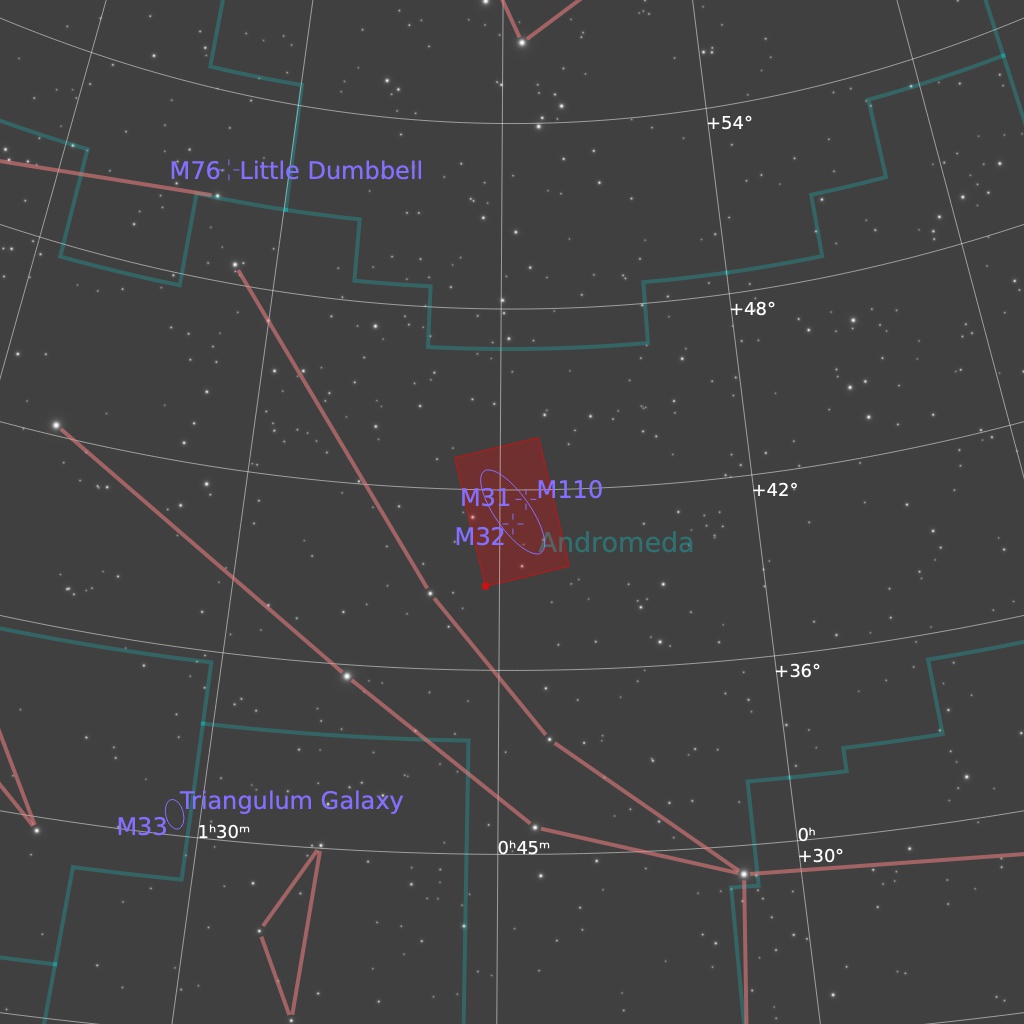
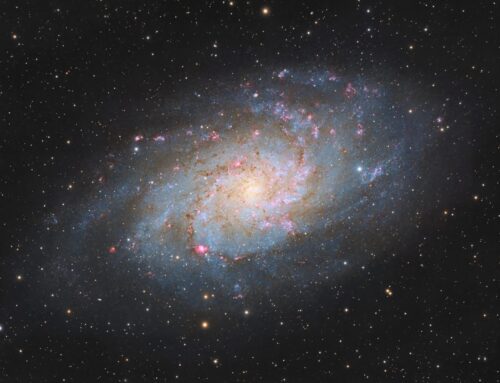
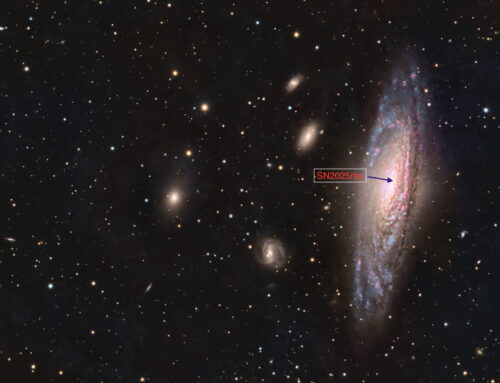
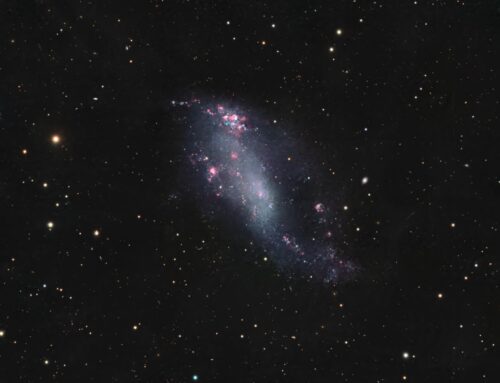
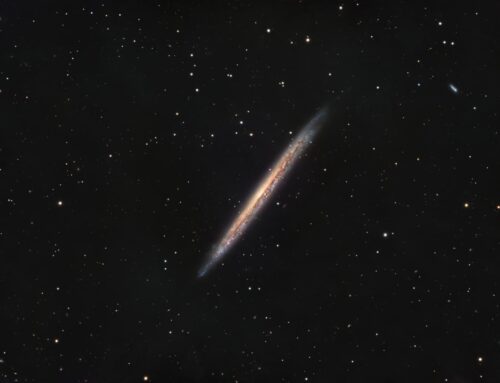
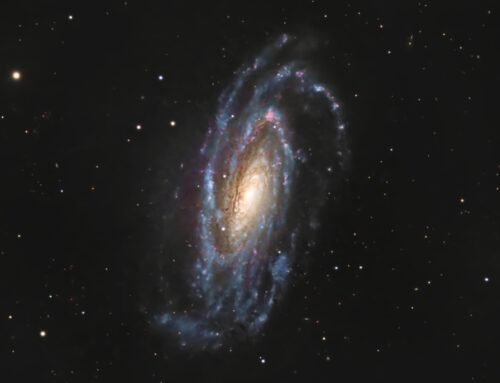
Beautiful result Ron!!